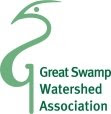 | |||
| The Ashokan Reservoir in New York's Ulster County is one of two reservoirs in the Catskill Water Supply System delivering drinking water to New York City. Situated approximately 73 miles north of the city, the Ashokan supplies about 40% of NYC's daily drinking water needs. Credit: flickr.com//photos/carbonnyc (D. Goehring) |
However, city officials decided that the cheaper and better option was to protect the existing two-thousand-square-mile forested watershed that naturally filters water flowing into the city. That plan only cost about $1.5 billion, and the money was spent on such things as buying buffers of natural landscape around reservoirs to act as filters, and negotiating agreements with upstate cities and towns to limit development in watershed areas. While using woodlands to clean the water made economic sense on its own, maintaining tracts of native forest provided many additional ecosystem services, including wildlife habitat, recreation, and carbon dioxide absorption.
Deforestation anywhere can cause many problems for our water supply. Where freshwater once fell as rain (and was filtered by the forest and slowly released) there are now farm fields, lawns, and parking lots that pour polluted sediment into our streams and rivers. In fact, research shows that river basins with the greatest amount of farmland produce the most pollution-laden sediment, while river valleys with the most forest coverage produce the least. Nitrogen and phosphorus from agricultural fertilizers and poultry waste increase the proliferation of bacteria that, in turn, consume the oxygen dissolved in the water.
Deforestation along rivers and streams means that there are no woodlands to hold back the water, and so a faster flow is given to more water. Faster-flowing streams reduce the number and array of ecosystem services a waterway can provide. Broad streams with wooded banks flow more slowly than those without streamside forests, allowing more time for contaminants to settle out and be taken up by nearby trees and neutralized by microbes.
Re-forestation can help reverse these kinds of problems. In fact, trees could be used to remedy a lot of modern-day water pollution problems, including some of the worst kinds of human-created chemical waste, such as dioxin, ammonia, dry cleaning solvent, oil and gas spills, PCBs and other industrial waste. The trees take up waterborne toxic waste and then neutralize, metabolize, and/or vaporize it.
Because this runoff water comes from wide-ranging sources, it is difficult to capture and treat in a sewage plant. We cannot catch all of that stormwater and treat it conventionally ---- it would be too expensive. Perhaps the best way to get our streams and rivers cleaned up is to "tree-farm" our way out of the problem. Strategically placed in drainage areas where tainted water collects, willow and poplar trees could work their root zone magic and make very effective water filters.
There are many advocates in favor of "clear cutting" trees to make way for new houses and sports fields, but where are the advocates for our trees? Where are those who stand up in favor of keeping our trees, especially in situations where they really are needed? In the future, perhaps we should better understand and support the important role that trees play along our streams and rivers.



